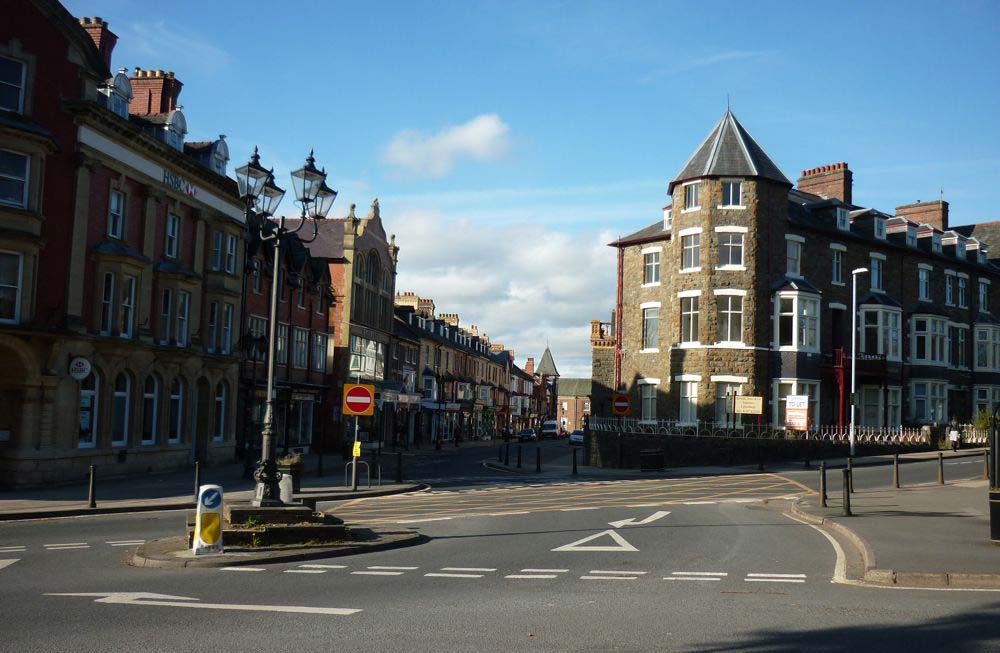Market Town & Tourist Resort History & Tradition

The history of Llandrindod Wells is linked to the health giving waters which it has to offer. It is therefore surprising to find that, although the beneficial effects of taking the waters were known to the Romans, the development of the town did not take place until the mid 19th century with the coming of the railway.
The town then grew at an astonishing rate, as the taking of the waters became a fashionable part of Victorian Life. However when tracing the history of our town and the surrounding area, the Roman occupation of Britain provided the first evidence of spa waters in the area.
The best known Roman settlement in the area was situated at Castell Collen, just outside Llandrindod Wells. Today it is an important archaeological site. As already mentioned, the health giving benefits of the many types of waters coming from local springs were already known to the Romans but it was not until the end of the seventeenth century that the saline springs were mentioned in local reports from the area, although no development of note followed.
At that time the town of Llandrindod Wells did not exist and the area comprised just a few scattered farming communities, the Llanerch Inn and two 13th century churches, both of which still see regular worship. The one is the former parish church, which is almost 1,000 feet above sea level and overlooks the present town and the other, Cefnllys Church, just over a mile from Llandrindod Wells in a beautiful and remote beauty spot known locally as Shaky Bridge.
In 1749, a gentleman called Mr. Grosvenor, an astute and far-sighted entrepreneur, bought and extended a few local houses to encourage visitors and, more speculatively, built a large hotel overlooking the present lake and just below the parish church mentioned earlier. With rooms for several hundred guests it offered a wide range of facilities for visitors, including hairdressers, milliners, glovers etc.. For entertainment there was billiards, racing and rooms that catered for balls and assemblies.
Of course, the local spring waters could be sampled, encouraged by a work on the beneficial effects of taking the waters, which had been prepared by Dr. Wessel Linden in 1756. This enterprise was open for about forty years but during this time acquired a somewhat dubious reputation and the building fell into disrepair and closed some time after 1787. The site of the hotel is now occupied by the Hall Farm, nestling beneath the Old Parish Church.
The area then reverted to its former anonymous state until the coming of the Central Wales Railway in 1865. The railway made the area much more accessible and coincided with the Victorian fashion for taking the waters.
The town began to grow, only slowly at first but speculators soon saw the potential offered by good rail access, a bountiful supply of building land and the profusion of medicinal waters.
In 1880 Radnorshire County Council established its offices in the town and the phenomenal growth of the town was now well under way.
Hotels, apartments, new treatment centres, two pavilions, a golf course, bowling and putting greens and a 14 acre boating lake were all built within a few years to cater for as many as 80,000 visitors a year.
These visitors, who represented in the main the gentility from all over the land, brought their own entourage of servants, further swelling the numbers in the town. Local papers listed week by week the names of visitors resident in Llandrindod Wells, reflecting the importance not only of being there but of being seen to be there. The growth of the town continued unabated into the early twentieth century, with the railway at one stage running through trains to destinations as far apart as London, Birmingham, Manchester and Liverpool.
However, the outbreak of the First World War saw a drastic reduction in the numbers of visitors and the area was slow to recover after the cessation of hostilities. Also the depression, followed by the growth of seaside holidays, which were becoming more readily available to the ordinary working people, saw the decline continue. The Second World War heralded what appeared to be a terminal decline in the popularity of visiting the town and taking the waters.
Fortunately, Llandrindod Wells saw an opportunity to consolidate its role as an administrative Centre, and established a light industrial base in the town. Increased housing to encourage new businesses, and a good range of shopping facilities, enabled the town to grow at a steady and sustainable rate.
Recent years have seen a welcome increase in visitors holidaying in the town, and Llandrindod Wells boasts a variety of accommodation to suit all tastes and pockets, including large, well-appointed hotels, licensed guest houses, bed and breakfast, farmhouse accommodation, caravan and camping facilities.
There are many regular attractions to cater for visitors, the best known of which are Drama Festival Week at the beginning of May each year, and the Victorian Festival at the end of August. The Royal Welsh Show, the largest agricultural show in the U.K., is held in July each year at Llanelwedd, six miles south of Llandrindod Wells and is an extremely popular family venue.
As to the future for Llandrindod Wells, there are plans to develop the former Rock Park Spa and provide up-to-date treatment as a Hydrotherapy Centre. This will make full use of the beneficial effects to be obtained from the local mineral waters. Improvements in the Rock Park plus the new 'Heritage Trail', mean that Llandrindod Wells can look forward to the 21st century with a sense of excitement and optimism.
